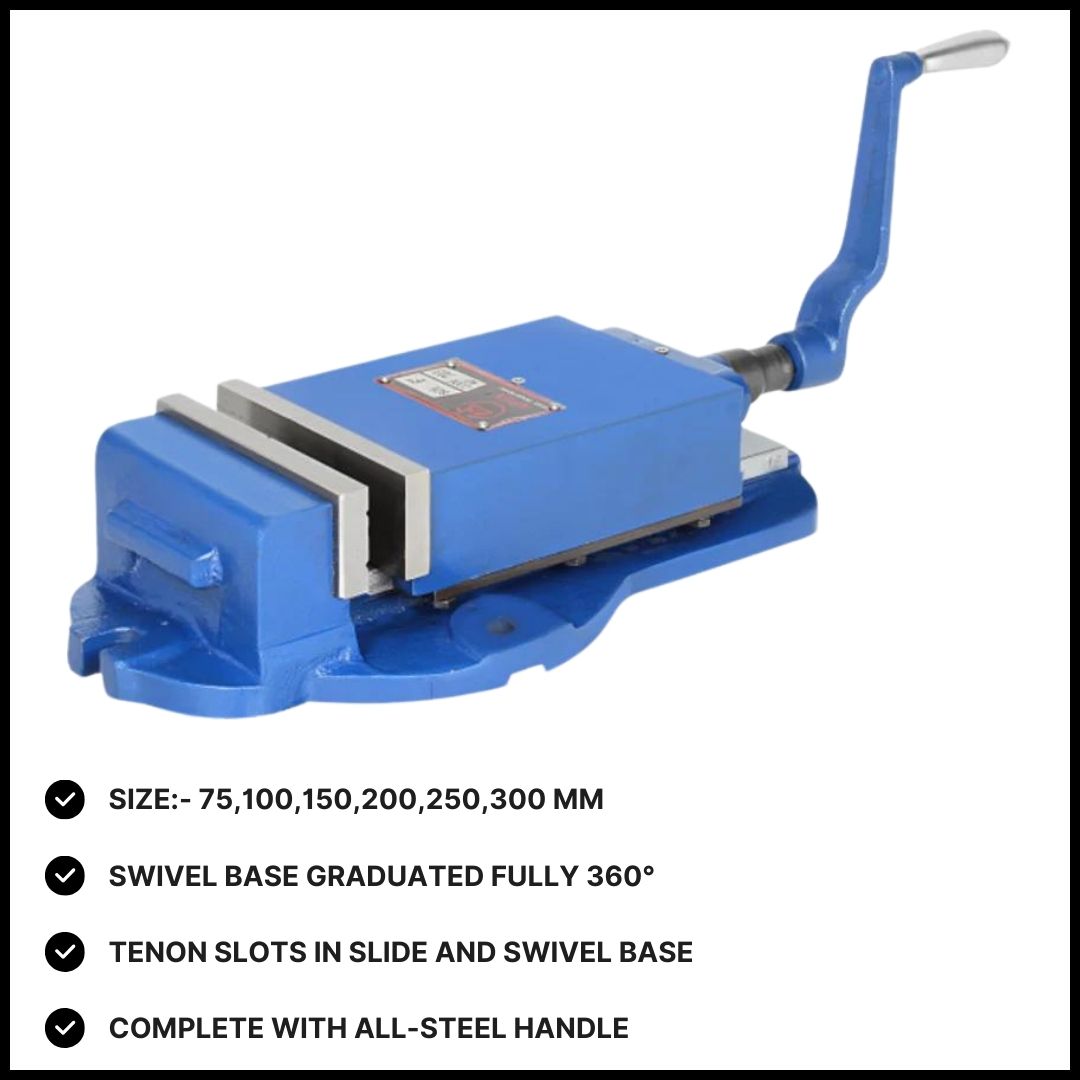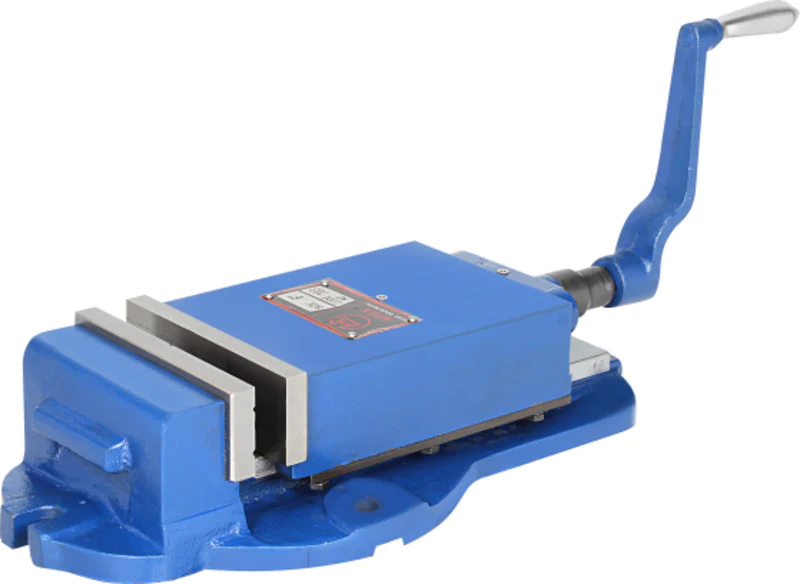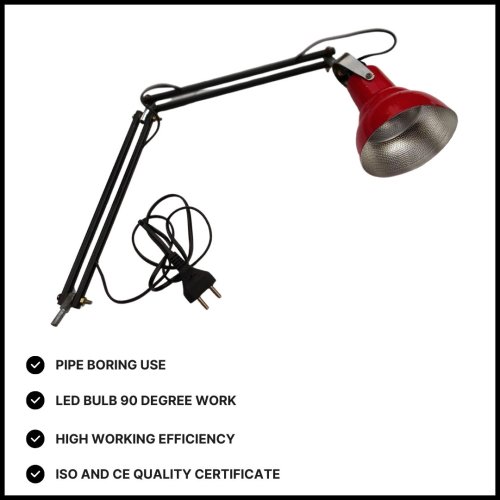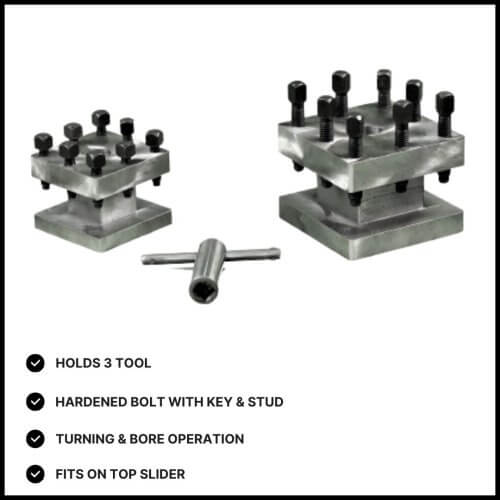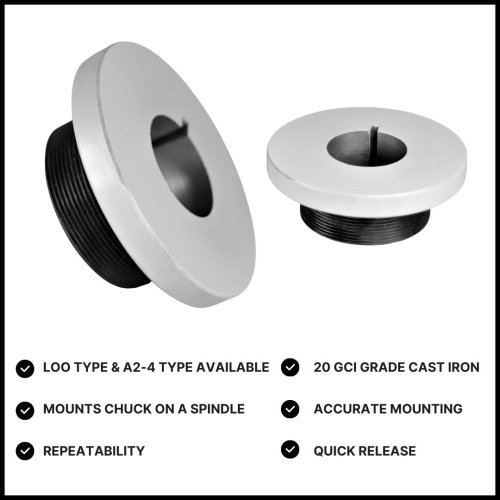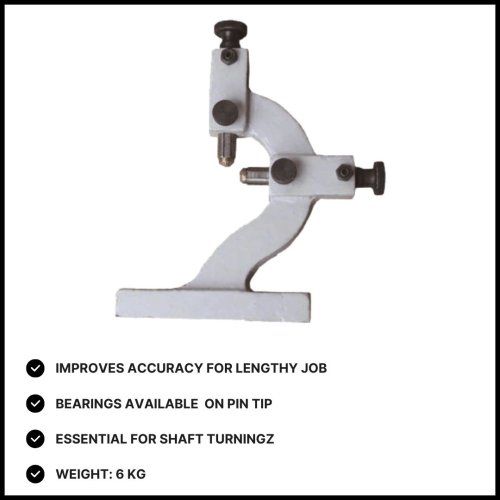Machine Shop Accessories, Tools & Instruments
Milling Vise Plain
₹10,000
100 MM Rs.10,000/-
150 MM Rs.13,500/-
200 MM Rs.21,000/-
A milling vise, specifically a “plain” milling vise, is a fundamental tool in machining operations, particularly in milling machines. Here’s an explanation of what a plain milling vise is and its significance in machining processes:
Definition and Features
- Purpose: A milling vise is used to hold workpieces securely in place during milling operations. It allows for precise positioning and clamping of the workpiece, ensuring accuracy in machining tasks.
- Design: A “plain” milling vise refers to a type of vise that has a simple, straightforward design without additional features such as swivel bases or tilting capabilities. It typically consists of a stationary base and a movable jaw that can be adjusted to grip the workpiece firmly.
- Construction: These vises are usually made from durable materials such as cast iron or steel, capable of withstanding the forces generated during milling operations. The jaws of the vise may have hardened surfaces to resist wear and provide a better grip on the workpiece.
- Clamping Mechanism: The plain milling vise employs a screw mechanism (often a lead screw or acme screw) to move the movable jaw towards or away from the stationary jaw. This allows the vise to accommodate various sizes of workpieces securely.
Importance in Milling Operations
- Workpiece Stability: The primary function of a milling vise is to securely hold the workpiece in place while milling operations are performed. This stability is crucial for achieving precise cuts and maintaining dimensional accuracy.
- Accuracy: By firmly clamping the workpiece, the milling vise ensures that it remains fixed relative to the cutting tool. This minimizes the risk of workpiece movement during machining, thereby enhancing the accuracy of the finished part.
- Versatility: Plain milling vises are versatile tools suitable for a wide range of milling tasks, from simple to complex machining operations. They can hold workpieces of different shapes and sizes securely, making them essential in various manufacturing industries.
Usage Considerations
- Jaw Capacity: The size of the vise jaws dictates the maximum workpiece dimensions it can accommodate. Machinists select a vise with jaws appropriate for the size of their typical workpieces.
- Maintenance: Regular inspection and lubrication of the vise screw mechanism ensure smooth operation and longevity of the vise.
- Compatibility: It’s important to choose a milling vise that is compatible with the milling machine being used, considering factors such as table size and T-slot dimensions for proper mounting.

